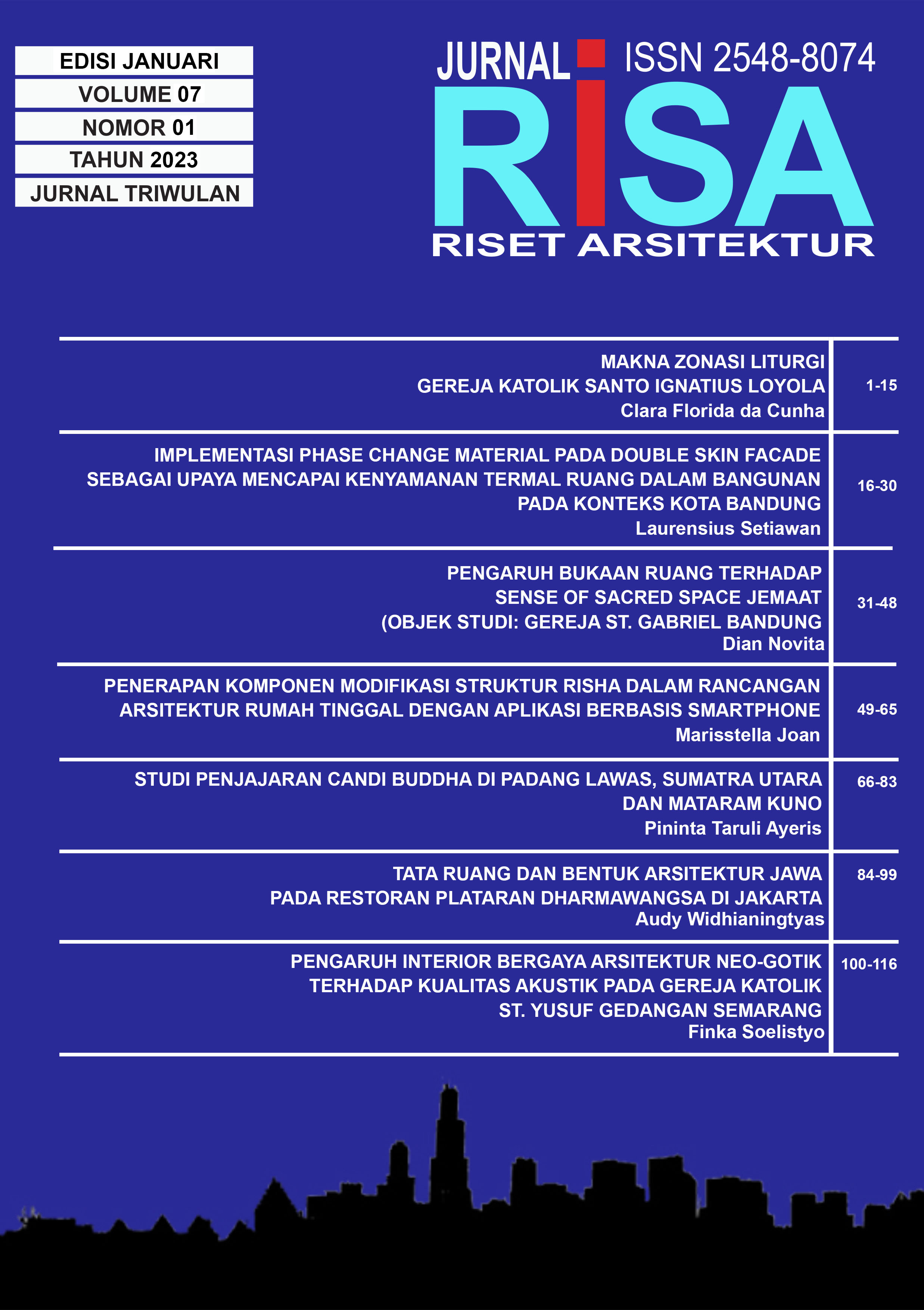THE IMPLEMENTATION OF PHASE CHANGE MATERIAL AT DOUBLE SKIN FACADE AS AN EFFORT TO AIM INDOOR THERMAL COMFORT AT BANDUNG CITY CONTEXT
DOI:
https://doi.org/10.26593/risa.v7i01.6359.16-30Abstract
Abstract - The building envelope is one of the important building elements to create indoor thermal comfort of the building because it interacts directly with the environment outside the building. Double skin facade is one of the building envelope design strategies that not only be used as part of the building facade design but can also be used to increase the indoor thermal comfort of the building.
Along with the development of technology, design of the double skin facade is also increasingly diverse and developing, one of which is the material technology used. Phase change material is a material that is quite renewable and can be applied to various building elements such as building envelopes or double skin facades. Phase change material is a material that has the ability to release and store latent heat energy for a relatively long period of time without experiencing a change in temperature. Phase change materials have the ability to change phase from liquid to solid or vice versa. Some types of phase change materials have a transparent character so that this character can be utilized and applied to transparent building elements such as building envelopes or double skin facades as a strategy to increase the indoor thermal comfort of the building.
This study aims to determine the effect of the application of phase change materials on the building's double-skin facade on the thermal comfort of indoor buildings in the city of Bandung. phase change material itself is a material that has not been widely applied, especially in the world of architecture so that research on phase change materials can increase knowledge about strategic innovations to achieve thermal comfort in buildings.
This type of research is quantitative research with experimental methods using digital simulation. Experiments with digital simulations were carried out using Design Builder and EnergyPlus software. The analysis is carried out by comparing the conditions of the simulation model before the application of the phase change material on the double skin facade and after the application of the phase change material on the double skin facade.
Based on the analysis process, it is concluded that the application of phase change materials can increase indoor thermal comfort. The alternative double skin facade design with a phase change material has an average operating temperature change effect of up to 7.34% compared to a room without the use of phase change material.
Keywords: phase change material, double skin facade, indoor thermal comfort
Additional Files
Published
Issue
Section
License
Copyright (c) 2023 Laurensius Setiawan

This work is licensed under a Creative Commons Attribution-NonCommercial-ShareAlike 4.0 International License.









